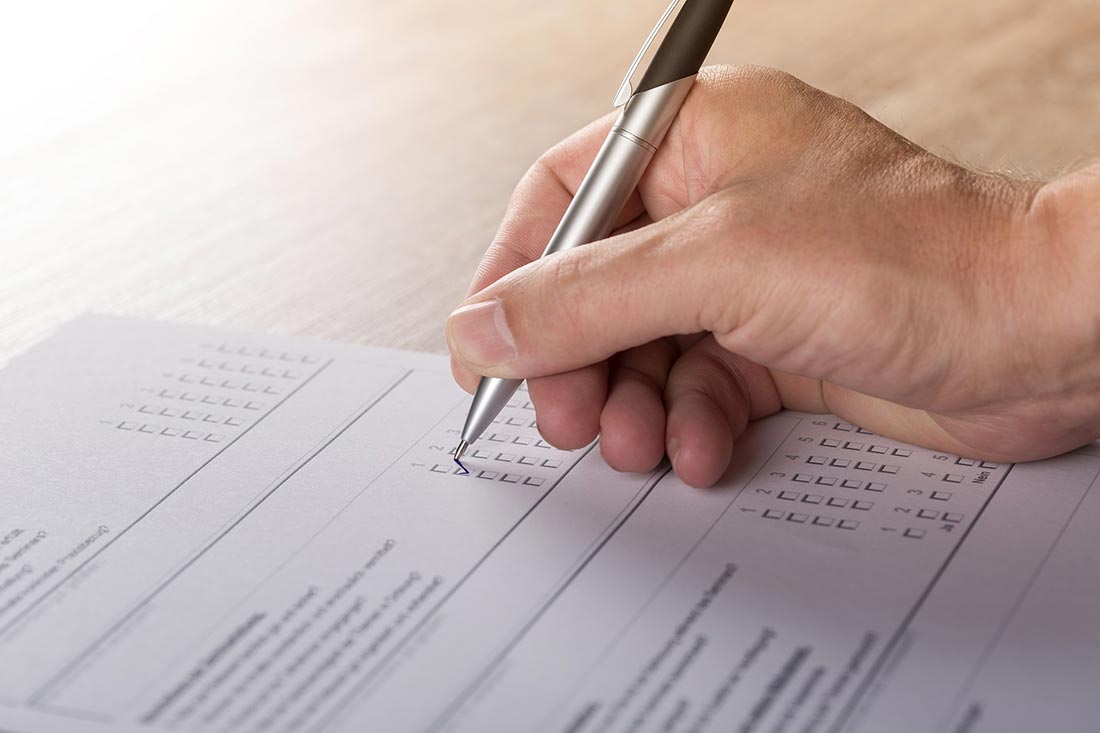Nearly everywhere we look businesses are at a standstill. Whether you are one of those whose business or workload is affected by COVID-19, or it is business as usual for you, this is a great time to ramp up your marketing efforts. Even if you don’t have extra downtime, your customers might and therefore more likely to spend time interacting with your brand. Sending out a survey you have been meaning to implement is one of those activities your customers may find they now have time to respond to. Follow these tips to improve your response rate and quality of data.
Make your survey as short as possible. According to SurveyMonkey, 45% of respondents will spend up to 5 minutes responding to a survey, 33% will spend up to 10 minutes, and completion drops sharply after that. When designing the survey, make sure every question is crafted to get you only the data you need; avoid useless questions.
Show a progress bar to give people a feel for approximately how long till the finish. It would be a shame to have a participant drop after completing 80% of the questions because they have no idea how much time is left.
Ensure your participants that you will honor their privacy and anonymity if requested. Don’t ask too many personal questions and put personal questions at the end rather than beginning of the survey. If you claim the survey data will be completely anonymous, invite participants to respond to a survey link which is the same for everybody, not an invitation tied to their email address.
Often companies use incentives, such as a gift or entry into a drawing, for respondents completing the survey. This can help, but it is not always necessary and can even lead to unintended results. While the top things people want as a reward for completing a survey are a gift card, cash or a discount, rewards come in other forms. A survey asking members of a Homeowners Association how they want common funds spent is in their best interest to respond. For B2B surveys, be aware that employees often have rules against accepting any kind of monetary reward for doing something like this so for them it may be useful to promise to share the anonymized results so they can get a pulse on the subject or what competitors are doing. Finally, don’t offer an incentive if you aren’t sure exactly who your target audience will be. People with no knowledge or interest in your company or product may make up answers just to get the reward.
Be careful about presenting an odd number of responses in a multiple-choice question. This causes people to hurry through the answers taking the middle of the road answer. For example, it is very common for surveyors to ask a question like “How was our service?” with answers such as “Unacceptable, Acceptable, Excellent”. Here, Acceptable is the easy choice to make. A better set of choices would be “Completely Unacceptable, Had a Few Hiccups, Completely as Expected, Beyond My Expectations”.
Be clear when phrasing your questions. SurveyMonkey found that 40% of people that gave erroneous answers did so because the question was unclear. Don’t use company or industry specific acronyms or lingo unless you are sure your respondents will be familiar with them. And, be sure to give context. If you simply ask for an opinion on customer support do you mean customer account support or technical support?
Use closed ended questions such as check boxes and multiple choice. Not only does this make it faster and easier for respondents, it is also more meaningful for you to compile “apples to apples” responses.
Don’t ask two questions in one. If you ask “Was our customer service rep friendly and able to resolve your issue?”, how should someone respond if they found the rep to be very friendly and willing to help, but beyond their control to resolve the issue?
Follow up after the survey if you are expected to. If someone indicates they would like to be contacted about a problem, do it. If you promised an incentive be sure to send it to them. For drawings, post the winner on social media IF you have permission from that person. Doing so reinforces your credibility.
Test your survey for errors and completeness before you send it. Have friendlies in your company test it on different devices and as another “set of eyes” looking for misspelled words or bad grammar. If your survey contains Skip Logic make sure that is thoroughly tested as well.
Following these tips will get you more responses, with better data that is easier for you to interpret. Once the survey is over, be sure to spend some time thoughtfully analyzing the results and use the data to improve your products and services, as well as customer service.
Need help developing surveys or with other marketing initiatives? Schedule a free consultation call or give us a call at 214-732-7770.




